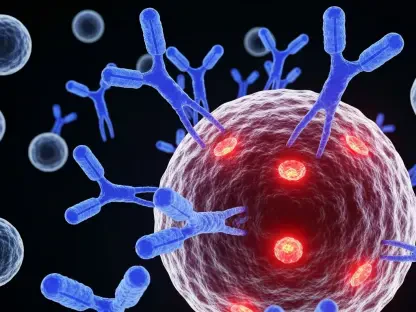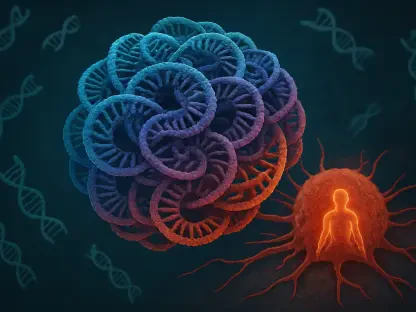In the evolving landscape of cattle agricultural enterprises, ensuring livestock health through tailored biosecurity strategies is a vital component of successful operations. The diversity of cattle operations leads to varying levels of risk and distinct control points, highlighting the importance of custom plans rather than a one-size-fits-all approach. The core essence of these biosecurity plans lies in their preventive focus, aiming to safeguard cattle health and welfare while being economically beneficial. Preventing health problems avoids the costs and complexities associated with treating outbreaks. Developing a sound biosecurity plan requires understanding the multifaceted nature of both domestic and international disease threats, ensuring the protection of livestock from a range of health challenges.
The Comprehensive Scope of Biosecurity
Biosecurity in cattle operations entails a dual focus: exclusion of foreign diseases and biocontainment of existing ones to curb their spread. This is akin to a well-coordinated defense system where each measure serves a specific purpose in overall disease prevention. Effective biosecurity strategies are illustrated through diseases such as bovine viral diarrhea, where preventive testing can halt its introduction. Similarly, for persistent conditions like pink eye, biocontainment—separating healthy animals from infected ones—can successfully contain outbreaks. Such strategies demand the expertise of veterinarians who play an indispensable role in both crafting and implementing biosecurity measures, aiming to protect livestock health, boost animal welfare, and reduce economic losses.
Effective disease control, a cornerstone of biosecurity, hinges on comprehensive protocols that veterinarians emphasize as economically advantageous. These measures not only address common risks but also prepare farms for unexpected incursions of foreign animal diseases. Human factors often emerge as critical points of vulnerability in biosecurity frameworks, with training becoming paramount to prevent diseases from spreading through human interaction. The foundation of a successful biosecurity plan rests upon four principles: exclusion, separation, cleaning, and disinfection. These components work together seamlessly to create a robust defense against potential health threats in cattle operations.
Principles of a Tailored Biosecurity Plan
The first principle, exclusion, although challenging in cattle operations, can draw inspiration from more controlled environments in industries like swine and poultry. Strategies such as all-in, all-out cycles aid in managing new entries effectively. Exclusion tactics focus on maintaining herds free from external diseases and eradicating those that manage to infiltrate. The second principle, separation, minimizes contact among calves and between different pens, effectively disrupting disease transmission. Cleaning involves the thorough removal of organic matter before applying disinfectants, as these substances are ineffective against unclean surfaces. This underscores the necessity for meticulous cleaning, ensuring thorough rinsing of contaminated items before disinfection.
Disinfection represents the final crucial step after cleaning, requiring adherence to correct concentrations and contact times to optimize its efficacy. The overarching aim is to create a sanitary environment that hinders disease spread, necessitating consistent application across operations. To embark on developing an effective biosecurity plan, identifying diseases specific to a farm’s context becomes a prerequisite. Recognizing various transmission pathways, such as aerosol, direct contact, fomites, oral routes, vectors, and zoonotic transmission, guides the formulation of protective strategies. This promotes comprehensive disease prevention, ensuring minimal risk transmission within and beyond the operation.
Understanding Transmission and Prevention
Each transmission mode demands specific strategies to minimize risks. For example, aerosol transmission involves airborne droplets, which require measures like increased spatial separation, adequate ventilation, controlled humidity, and appropriate stock densities. Direct contact focuses on increasing space and segregating healthy from sick animals, while fomites, inanimate objects acting as disease carriers, are countered through cleaning and disinfection. Scenarios like oral transmission emphasize preventing cross-contaminations. Vector control addresses pests like flies and ticks, while zoonotic transmission highlights hygiene to prevent cross-species disease spread. Each route offers unique challenges, necessitating tailored preventive measures to ensure comprehensive protection.
The practice of biosecurity endeavors to stay a step ahead of potential threats, emphasizing proactive measures to limit risks within controllable parameters. Complete eradication of risks remains elusive; however, biosecurity aids in significantly mitigating threats using available resources. Although many cattle farmers have never encountered highly contagious diseases in their herds, the rationale for heightened biosecurity remains evident: prevention of catastrophic disease outbreaks. Transitioning to more stringent biosecurity protocols can appear intimidating, yet gradual, consistent steps can bolster protection efforts, ensuring achievable goals through informed and incremental strategies.
Strategic Path Forward
Biosecurity in cattle operations focuses on keeping out foreign diseases and containing existing ones to prevent their spread, similar to a strategic defense system where each action plays a crucial role in protecting against diseases. Effective biosecurity can be seen in how diseases like bovine viral diarrhea are managed—using preventive testing to avert its entry. For ongoing issues like pink eye, separating healthy cattle from the sick can contain outbreaks effectively. Veterinarians are essential in devising and implementing these measures, safeguarding livestock health, promoting animal welfare, and reducing financial losses.
A key to successful biosecurity is robust disease control protocols, which veterinarians assert are economically beneficial. These protocols tackle common risks and prepare farms for unexpected foreign animal disease intrusions. Human elements often pose vulnerabilities in biosecurity plans, making training vital to prevent disease transmission through human contact. A solid biosecurity plan is built on four core principles: exclusion, separation, cleaning, and disinfection, which collaboratively form a strong defense against potential health threats in cattle operations.









